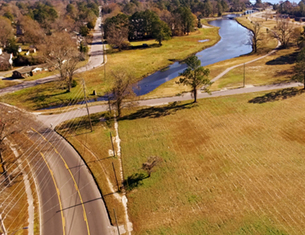Press Release:
$2.8 billion in state and federal funds awarded for Florence and Matthew Recovery
RALEIGH: Nearly a year after Hurricane Florence hit, Governor Roy Cooper has updated the state on the progress of the recovery as North Carolinians recover from three deadly storms in three years.
In the immediate aftermath of Florence, Governor Cooper created the North Carolina Office of Recovery and Resiliency (NCORR) to work with North Carolina Emergency Management (NCEM) to streamline the recovery process and get federal funding out faster to families and communities in need. Over the past nine months, the specialized experts at NCORR have helped make recovery smoother and faster for North Carolinians.
BY THE NUMBERS
In total, North Carolina has spent $2.8 billion in state and federal funding to help survivors of Hurricane Matthew and Hurricane Florence. For a fact sheet on hurricane recovery by the numbers, click
HERE.
NCEM has delivered
$573.8 million via the FEMA Public Assistance Program to repair critical infrastructure due to Matthew and Florence impacts.
$229.7 million in FEMA Individuals and Households grants have been approved for
63,664 homeowners and renters to help with Matthew and Florence recovery.
NCORR has awarded $108 million in federal CDBG-DR funds to homeowners, small businesses and local governments. North Carolina still does not have access to any of the CDBG-DR money appropriated after Hurricane Florence.
There are 96 CDBG-DR-funded home construction projects underway and 151 complete across North Carolina. More than 1,000 homeowner award letters for CDBG-DR have been sent.
Since 2018, there has been a 300% increase in homeowner construction in the CDBG-DR program
"North Carolina is working hard to make a difference for survivors of recent devastating hurricanes, but there is more work to do," said Governor Cooper.
"We will keep pushing to get critical funding out to those who need it and pushing for important changes from Congress that will cut red tape to make the process faster."
"The storms North Carolina experienced over the past several years, especially Hurricane Florence, have been devastating and we are working hard to recover," said Mike Sprayberry, who directs NC Emergency Management and the NC Office of Recovery and Resiliency.
IMPROVING THE PROCESS
Earlier this week, Governor Cooper met with President Trump and pushed for key changes to federal disaster recovery spending to help get funds to people faster. Governor Cooper noted that CDBG-DR money often takes too long to reach the states because of delays in the publication of the Federal Register.
"Establishing a codified program for the spending of CDBG-DR funding would allow us to get long-term recovery money to storm survivors far more quickly," said NCORR Chief Operating Officer Laura Hogshead.
"Building a program from the ground up after each disaster takes a tremendous amount of time and we can be even more effective with these important changes."
In addition to pressing for the CDBG-DR funding from Florence to be sped up and made available, Governor Cooper recommended Congress should codify the HUD-based disaster relief grant program so that Federal Registers are no longer required. Additionally, the Governor is advocating for a universal application for federal programs for survivors would help simplify the process for people impacted by storms and other disasters.
Governor Cooper shared his thoughts in an op-ed that can be read
HERE.
Also this week, Governor Cooper announced nearly $6 million was raised for the North Carolina Disaster Relief Fund after Hurricane Florence hit. More than $5.4 million to 48 nonprofit organizations and local government entities serving 25 counties was distributed through the Golden Leaf Foundation and an additional $1 million including donations to the N.C. Disaster Relief Fund was distributed through the North Carolina Community Foundation. The funds went to rebuilding and repairing homes, rent and mortgage payments, utilities, food, and replacement of personal property.
- Contact: Ford Porter
- govpress@nc.gov

























